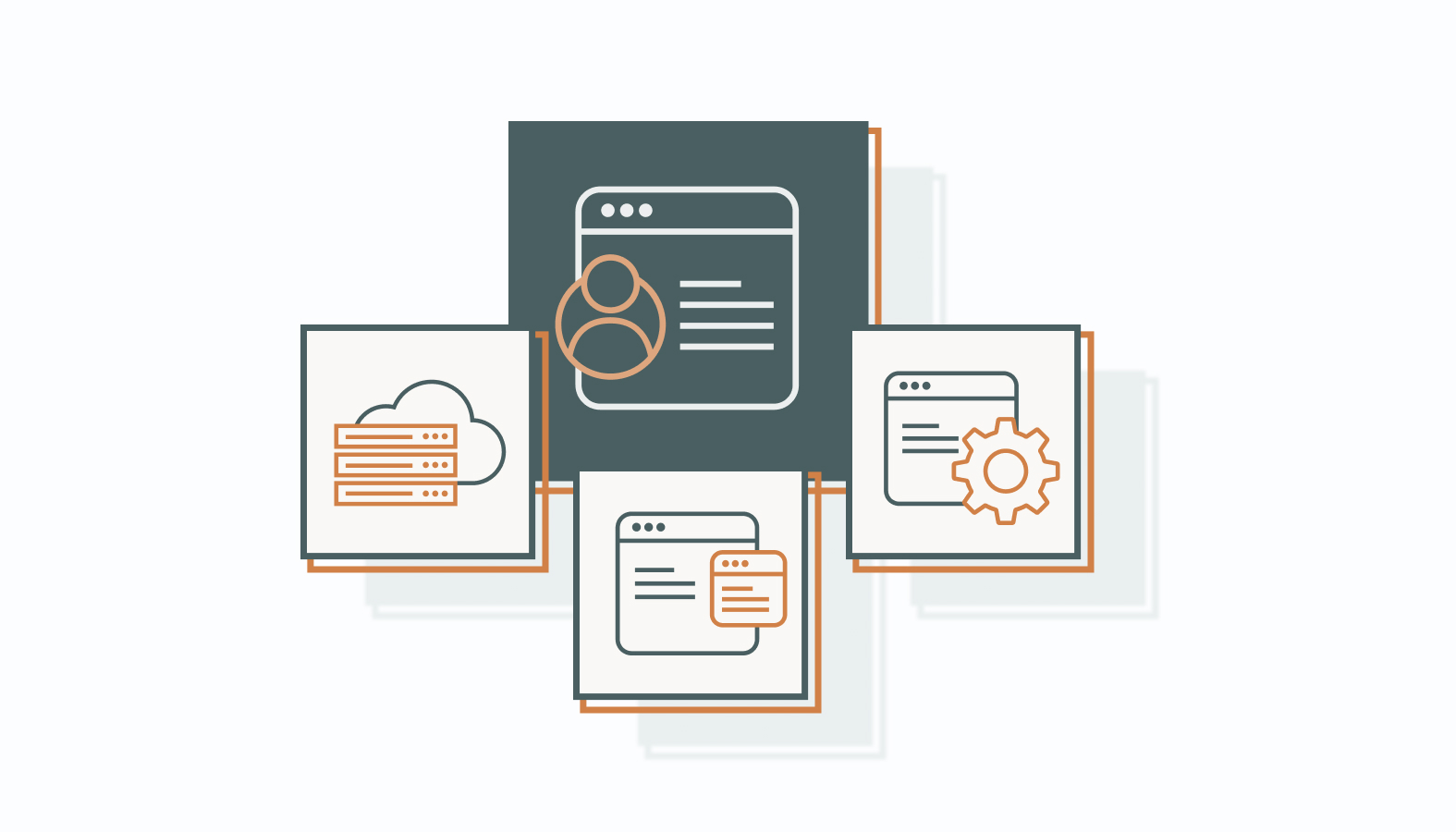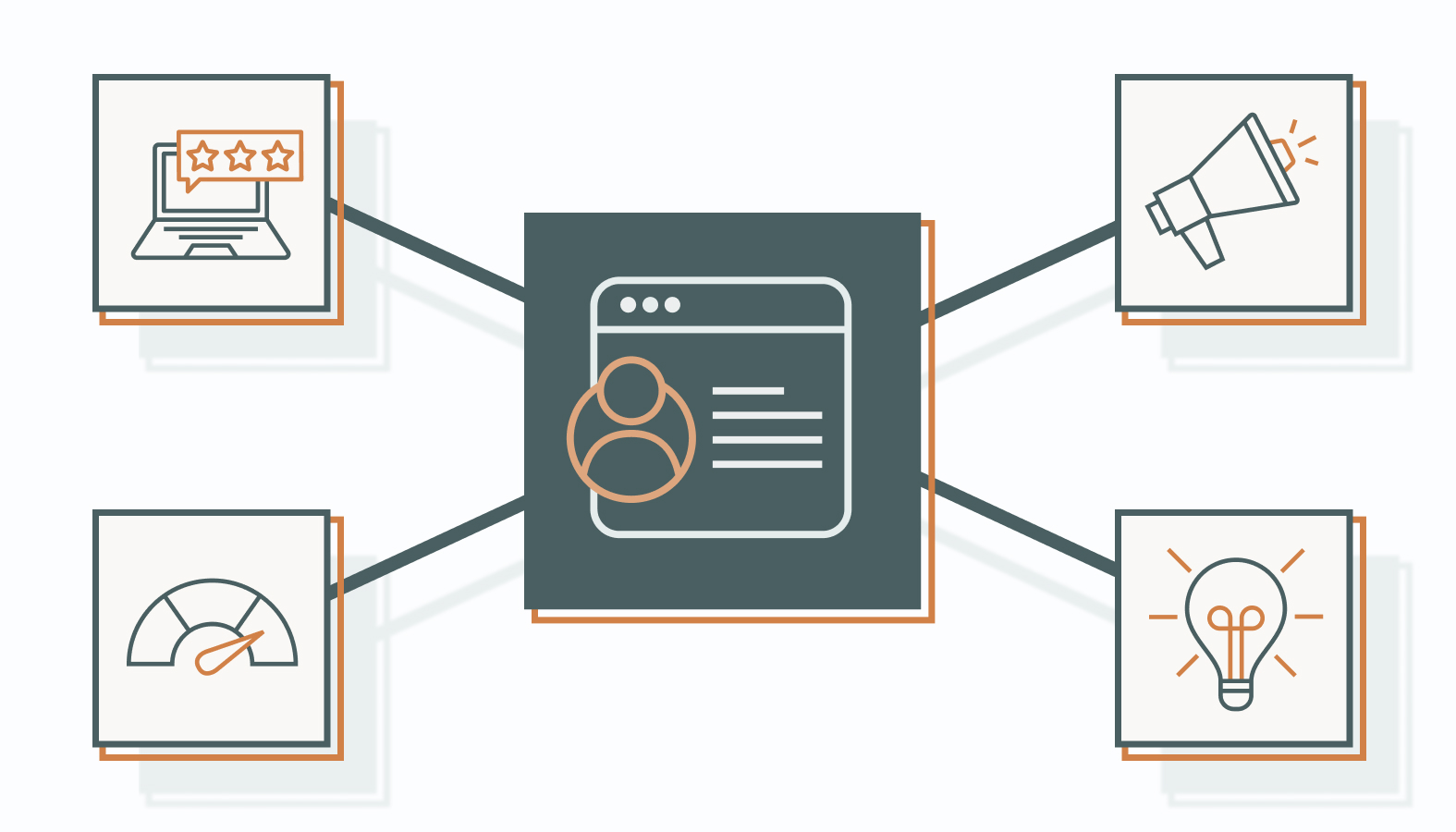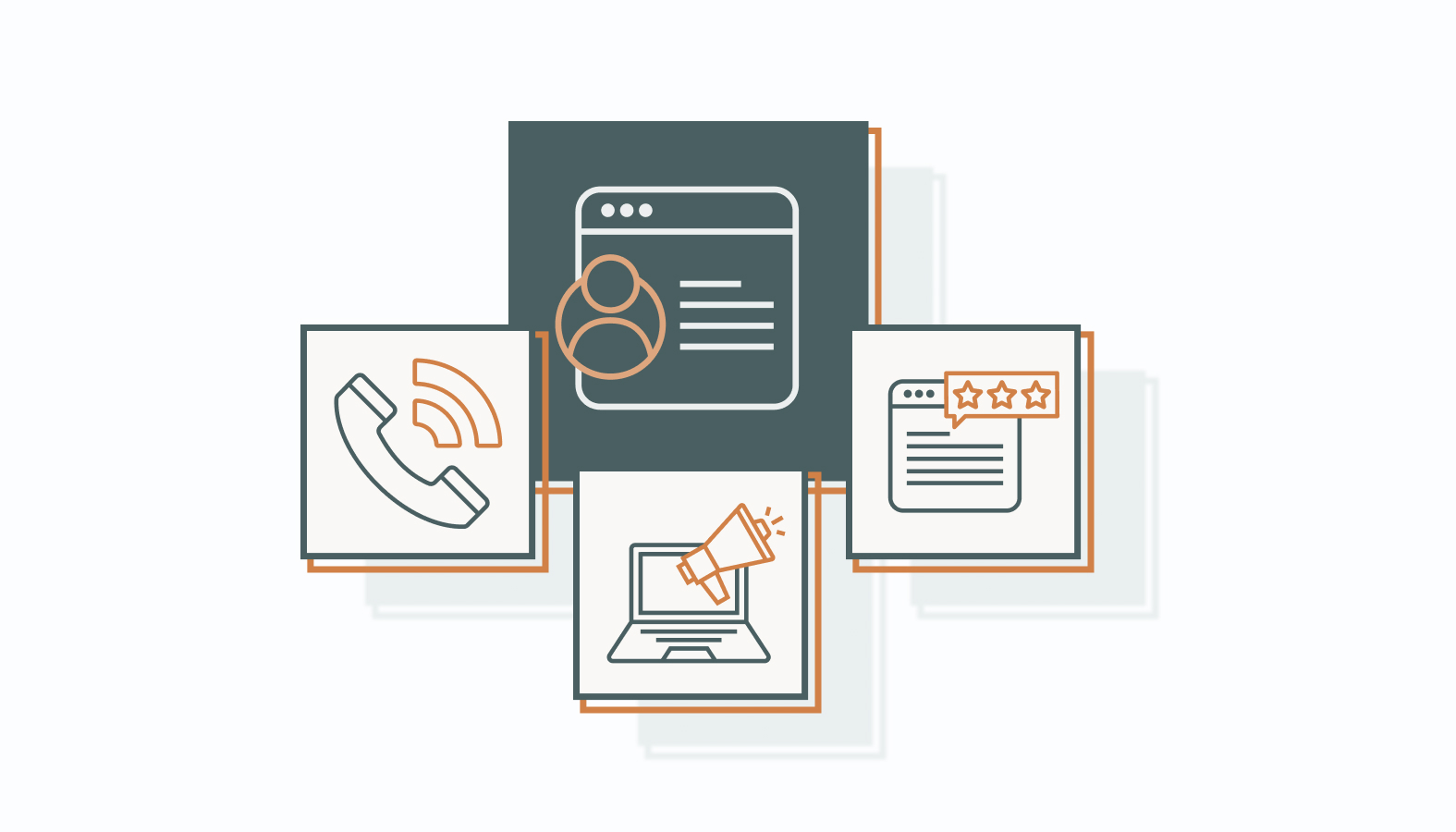Customer relationship management has become a lot more sophisticated than a simple database of names and emails. For growing businesses, it’s now a strategic engine: one that organizes chaos, connects teams, and drives smarter decisions through clean, centralized data.
Still, many companies struggle to get past the basics. Either their CRM feels clunky, underused, or worse, like another task instead of a growth tool. Add AI into the mix and things get even more overwhelming.
This guide is here to cut through the noise. Whether you’re just getting started or looking to optimize, we’ll break down what matters, what works, and what’s next.
What is Customer Relationship Management (CRM)?
Customer relationship management helps businesses build strong, lasting connections with their customers.
Whether you’re a small team or an enterprise, CRM simplifies how you manage interactions, understand needs, and act on data. It’s more than contact storage. It’s how you improve every experience through insight.
The Core Purpose of CRM
CRM puts your customer at the center of everything. It’s both a mindset and a system that drives loyalty, retention, and growth by making relationships more intentional and informed.
These platforms do more than log names and purchases. They bring together every call, email, ticket, and meeting into one view. That unified profile gives you the context to understand your customer and act as if you know them, because you do.
When CRM is done right, it helps customers stay longer, spend more, and recommend you to others for being worth their time. No tricks. Just strategic, data-driven relationship building at scale.
Key Elements of an Effective CRM System
An effective CRM rests on three core components:
- customer data management,
- interaction tracking, and
- workflow automation.
When those elements work together, businesses gain sharper insights, faster execution, and better customer experiences.
Managing Customer Data in CRM
Customer data drives every smart decision. But it only works if it’s clean, current, and centralized.
To manage CRM data effectively:
- Centralize Data. Consolidate customer details from all sources (sales, marketing, support) into a single platform.
- Ensure Data Quality. Regularly clean and deduplicate records to maintain accuracy.
- Protect Privacy: Adhere to data privacy regulations and establish clear policies for data access.
When you collect and organize customer data effectively, you can segment audiences smarter, anticipate their needs, and personalize interactions that hit the mark.
Tracking Customer Interactions with CRM
CRM systems are champions of tracking every customer interaction, regardless of where it occurs — email, phone, social media, chat, or in-person.
Detailed interaction histories bring several advantages:
- Holistic View: See a complete timeline of every customer touchpoint.
- Personalized Service: Reference past conversations and preferences to tailor support.
- Proactive Engagement: Spot patterns and reach out before issues arise.
Customers notice when you remember the details. And they stay when you act like it matters.
By maintaining thorough records, businesses can greet customers like old friends (not faceless account numbers) and as a result, boost satisfaction and trust.
Automating Workflows with CRM
Automation is where CRM systems truly shine. It takes repetitive tasks off your team’s plate, allowing them to focus on what they’re precisely hired to do.
Examples of automated workflows that enhance customer engagement include:
- Lead Assignment: Route incoming leads to the right sales rep instantly.
- Follow-Up Reminders: Trigger automatic emails after a demo or purchase.
- Customer Onboarding: Guide new customers through setup with scheduled messages.
With automation in place, your team runs faster, your service feels more thoughtful, and customers stay on track without constant manual nudging.
CRM only works when the fundamentals are tight. But once they are, you don’t just have a tool. You’ve got a reliable engine for smarter decisions, better execution, and customer relationships that definitely scale.
Exploring CRM Technologies: Choosing the Right Fit
Choosing the right CRM technology comes down to finding the right alignment. It has to fit your goals, workflows, and growth plan (not the other way around).
Your CRM becomes the command center for customer engagement, so the right decision shapes everything from team performance to customer experience.
Here’s a smart breakdown of your options: cloud-based, on-premises, and open-source. Each serves a purpose. The key is knowing which one fits yours.
1) Cloud Solutions: Built for Flexibility
Cloud CRMs are built for modern teams that need to scale fast and work from anywhere. The appeal isn’t just in convenience—it’s in how effortlessly they adapt.
What makes them work:
- Scalable by Design: Add users, features, or integrations as needed—no new hardware, no disruption.
- Access from Anywhere: Your team gets a real-time system whether they’re across the office or the world.
- Low Maintenance: Software updates, security patches, and backups are handled by your provider.
For distributed teams and hybrid environments, cloud CRMs eliminate silos. Everyone’s working from the same page, in real time, without the tech overhead.
2) On-Premises: Control Without Compromise
On-premises CRM systems, while less common in today’s cloud-driven world, still hold strong appeal for organizations with strict data control and compliance requirements.
What they offer:
- Total Ownership: All customer data stays on your servers; no external hosting, no shared environments.
- Tailored Configurations: Customize every inch to match internal systems or regulatory needs.
- Enhanced Oversight: Maintain strict control over access, integrations, and infrastructure.
That level of control comes with more responsibility, higher costs, more setup, and ongoing maintenance. But for some, the tradeoff is worth it.
Quick comparison:
- Cloud CRM: Flexible, scalable, easy to deploy, less IT burden.
- On-Premises CRM: Greater control and customization, higher upfront costs, more IT resources required.
3) Open-Source: Full Access, Full Responsibility
Open-source CRM platforms offer a compelling third path: melding flexibility, transparency, and cost-effectiveness. With open-source, you’re not locked into vendor contracts and can tweak the system to your heart’s content.
What sets open-source apart:
- No Licensing Costs: Most platforms are free to use, making it budget-friendly from the start.
- Deep Customization: Full access to the code means you can build exactly what you need.
- Active Ecosystems: Many open-source tools are backed by strong developer communities and steady innovation.
The flip side? You’ll need IT resources to install, maintain, and support the system. Without built-in support, troubleshooting depends on internal skill or third-party help.
Open-source works best for companies that want ultimate control, lower recurring costs, and aren’t afraid to get under the hood.
Choosing the Right Approach
The best CRM technology is the one that matches your operating model, your team’s capabilities, and how much control you want to maintain. Flexibility, cost, compliance, and technical bandwidth all come into play. No option is perfect, but one of them is perfect for you.
Advantages of Customer Relationship Management (CRM)
CRM does more than manage contacts. It’s a performance driver that sharpens operations, strengthens relationships, and fuels long-term growth. With one centralized platform, your team works smarter, faster, and more intentionally, leading to better outcomes across the board.
Let’s break down the core advantages that make CRM a strategic investment for any business aiming to grow with precision.
Creating Memorable Customer Experiences
CRM equips your team with everything they need to engage customers with accuracy and relevance. No more generic outreach. Every interaction is grounded in context and driven by data.
How CRM elevates customer experience:
- Tailored Communication: Automated campaigns and dynamic content adjust to where customers are in their journey.
- Comprehensive View: Sales and support teams can instantly reference purchase history, prior conversations, and current needs.
- Timely Engagement: Key dates like renewals and anniversaries trigger reminders to reach out when it counts.
This level of detail makes every customer feel like a priority, and that translates into stronger loyalty and better retention.
Unifying Sales and Marketing
CRM eliminates the handoff issues between sales and marketing by putting both teams on the same data foundation. That clarity turns collaboration into conversion.
Here’s how CRM makes it happen:
- Shared Visibility: Everyone works from the same insights, so lead scoring and follow-up are aligned.
- Campaign Transparency: Marketing can trace which tactics produce qualified leads, while sales can see every prior interaction.
- Feedback Loop: Sales insights inform future targeting and messaging, tightening the strategy over time.
This sync cuts friction and builds momentum. As a result, customers move smoothly from first touch to close without feeling the disconnect.
Increasing Operational Efficiency
CRM is a workhorse when it comes to reducing friction and streamlining day-to-day tasks. It clears the clutter so your team can stay focused on execution.
Where CRM saves time and energy:
- Automated Actions: Follow-ups, scheduling, and reminders happen without manual input.
- Task Coordination: Assign and prioritize tasks across teams to ensure nothing slips through.
- Fast Access: With centralized data, your team spends less time digging and more time delivering.
Efficiency isn’t just about speed, but also about creating room for higher-impact work that drives results.
Making Smarter, Data-Driven Decisions
CRM analytics turn activity into insight, helping leadership see what’s working, what’s lagging, and where to invest next.
What data-backed decisions look like:
- Performance Tracking: View sales, marketing, and service metrics in real time.
- Trend Analysis: Spot shifts in customer behavior and adjust your approach early.
- Forecasting: Use historical patterns to plan resources and set growth targets with confidence.
You’re no longer guessing. You’re making calls based on real signals, not assumptions.
When CRM is embedded across your organization, it raises the floor and ceiling at the same time: smarter moves, tighter execution, and customers who stay because you actually understand them.
The Intersection of CRM and AI: Future-Forward Solutions
CRM has entered its next phase, and AI (artificial intelligence) is leading the charge. Integrated AI isn’t just making systems faster. It’s changing how businesses anticipate needs, tailor every touchpoint, and scale loyalty in a world where digital leads the conversation.
Here’s how AI is reshaping CRM into a predictive, personalized, and proactive growth engine.
Predictive Analytics
AI-powered analytics give CRM an anticipatory edge. By analyzing patterns in customer behavior, AI enables you to take action before a customer clicks, calls, or cancels.
Key uses include:
- Lead Scoring: Algorithms surface which leads are worth your time by predicting conversion potential.
- Churn Signals: Behavior patterns flag at-risk customers early, allowing for timely interventions.
- Relevant Offers: Content and product suggestions adapt based on previous behavior and lookalike profiles.
This transforms CRM from a tracking system into a forecasting tool, providing your team with precision at scale.
Chatbots and Virtual Assistants
AI-enabled bots now handle the first layer of customer engagement with speed and consistency. Whether it’s answering questions or booking a meeting, these tools free up human talent for higher-stakes conversations.
What they bring:
- 24/7 Access: Customers get immediate help, even when your team’s offline.
- Instant Response: Routine tasks are resolved in seconds, keeping queues short and ensuring customer satisfaction.
- On-Brand Accuracy: Every answer adheres to the brand’s voice and policy, minimizing inconsistencies.
Behind the scenes, virtual assistants can surface context during calls, manage reminders, and even draft responses, making your sales team sharper in every interaction.
Personalized Customer Experiences
The real game-changer? Personalization that adapts in real time. AI connects the dots between purchase history, browsing behavior, and preferences to create unique, tailored journeys.
Smart personalization in action:
- Dynamic Content: Web pages and emails shift based on user behavior or segment.
- Relevant Suggestions: Customers see offers and products aligned to their needs, not generic guesses.
- Next-Step Prompts: AI recommends ideal follow-ups, upgrades, or support actions based on current signals.
Done right, this makes customers feel seen (not scanned). And that drives long-term engagement you can measure.
AI doesn’t just add features to CRM. It redefines its role. You’re no longer reacting to customers. You’re staying ahead of them. That’s what forward-thinking CRM looks like and where the smartest teams are headed.
Real-Life CRM: Transformative Applications
CRM earns its value in execution. When fully integrated, it reshapes how teams sell, market, and support; unlocking stronger performance, tighter workflows, and higher customer satisfaction.
Here’s how CRM drives measurable results across sales, marketing, and service.
Revolutionizing Sales Processes
CRM platforms turn sales chaos into structure. They track every deal, surface high-value opportunities, and automate follow-ups.
Sales teams can:
- Streamline Lead Management: Leads are captured, scored, and routed automatically, so no one falls through the cracks.
- Track Pipelines in Real Time: Dashboards show exactly where deals stand, helping managers forecast and reps focus.
- Automate Follow-Ups: Timed emails and reminders keep prospects warm without manual chasing.
One B2B tech firm cut lead response time from days to hours with CRM automation. The result? A 20% lift in close rates. When your tools handle the administration, your team can focus on selling.
Elevating Marketing Strategies
CRM gives marketers precision. With unified data and behavioral tracking, campaigns become sharper and spend becomes smarter.
Marketers can:
- Segment With Intent: Build dynamic lists based on behavior, history, or interest—not broad guesses.
- Launch Personalized Campaigns: Tailor emails and ads to what each segment actually wants to hear.
- Track Campaign ROI Instantly: See what’s performing, what’s not, and where to optimize.
Take the e-commerce brand that reactivated 30% of lapsed buyers through a targeted win-back campaign. CRM gave them the insights. Personalization did the rest.
Enhancing Customer Service Excellence
CRM isn’t just for sales and marketing. It brings order and speed to support by centralizing information, routing tickets intelligently, and providing reps with full context.
Support teams can:
- Manage Tickets With Clarity: Cases are auto-assigned, escalated when needed, and never go missing.
- Access Full Customer Histories: Every rep sees the whole story; no more repeating issues or digging for data.
- Offer Omnichannel Support: Calls, chats, emails, and social messages all sync into one view.
One insurance provider used CRM to connect fragmented records. Result: 40% faster resolutions and a spike in satisfaction scores. Organized systems lead to confident service.
From accelerating sales cycles to running smarter campaigns and delivering standout support, CRM turns everyday operations into strategic assets. This is what transformation looks like in practice.
Navigating CRM Challenges: Strategic Solutions
CRM platforms hold serious potential, but the real advantage lies in overcoming common obstacles. From syncing with legacy systems to securing adoption and protecting data, strategic execution is what separates the wins from the misfires.
Here’s how to navigate the roadblocks and turn CRM into a valuable operational asset.
Integrating Seamlessly with Current Systems
CRM without integration creates silos, bottlenecks, and duplication. The goal is flow. If your CRM doesn’t connect to tools like your ERP, marketing automation, or accounting platforms, you’re creating more problems than you’re solving.
To avoid that:
- Map Your Stack: Identify all mission-critical systems and define exactly how data should move.
- Favor Open APIs: Choose CRM platforms with solid, well-documented APIs or native integrations with tools like Outlook, Slack, or Shopify.
- Prep Your Data: Clean, format, and validate everything before migrating. Test it hard before flipping the switch.
- Loop In Stakeholders Early: Involve IT, ops, and end users from the start to flag issues and align on workflows.
Deploy integrations in phases. Build in time to troubleshoot. Keep comms clear so no one’s caught off guard.
Promoting User Engagement and Adoption
If your team doesn’t use the CRM, it’s just expensive shelfware. Adoption makes or breaks the investment, but it rarely happens by accident.
Here’s how to drive it:
- Train by Role, Not Manual: Make training hands-on and relevant to real workflows, not just feature tours.
- Show Quick Wins: Highlight time saved and headaches avoided. Faster lead routing, fewer updates, better data visibility.
- Build a Feedback Loop: Give users a channel to share what’s working and what’s not. Take that input seriously and act fast.
- Reward Buy-In: Celebrate usage. Recognize individuals who fully engage with the system through incentives, visibility, or perks.
Most importantly, frame CRM as a performance tool, not a surveillance system. If it helps people do their jobs better, they’ll actually use it.
Safeguarding Data and Meeting Regulations
CRM houses your most sensitive customer data, which makes security and compliance non-negotiable, primarily if you’re operating under GDPR, HIPAA, or similar mandates.
To lock it down:
- Apply Role-Based Access: No more than what’s needed, no less than what’s functional.
- Encrypt Everything: In transit, at rest, and everywhere in between.
- Schedule Audits: Regular system reviews help spot vulnerabilities before others do.
- Use Built-In Compliance Tools: Choose CRMs with consent management, audit logs, and automated reporting baked in.
- Train the Team: Make sure employees know the rules, from handling requests to flagging risks.
Baking security and compliance into your CRM setup doesn’t just protect your data. It protects your brand, your customers, and your bottom line.
CRM done right isn’t a software rollout. It’s an infrastructure upgrade. Handle the complex parts up front, and you’ll end up with better systems, stronger adoption, and airtight protection, exactly how it should be.
CRM That Actually Works for You
The companies winning today are the ones who know their customers and act on that knowledge with speed and precision. CRM isn’t a digital Rolodex. It’s a performance system built to power smarter decisions, sharper engagement, and measurable growth.
As we’ve seen, a well-implemented CRM brings order to complexity. It turns scattered data into a single, trusted source. It automates what slows you down. And it equips every team (sales, marketing, support) with the insight to act like they truly know each customer.
AI has only raised the bar. Modern CRMs don’t just react; they predict. They suggest next steps, spot churn risks, and personalize at scale. That’s not a nice-to-have. It’s the new baseline for competitive customer experience.
But none of that matters if your CRM doesn’t fit. The real edge comes from picking the platform that aligns with your goals, processes, and team. Involve stakeholders. Define what success looks like. And remember: adoption and integration matter as much as features.
The future of CRM is human-centered, AI-accelerated, and designed to grow with you. Get the fundamentals right, and you don’t just manage customer relationships; you maximize them.
And if you’re not sure where to start with CRM — whether it’s selection, setup, or strategy — schedule a candid conversation with one of our CRM experts. We’ll help you cut through the clutter and build a system that works for your company.









